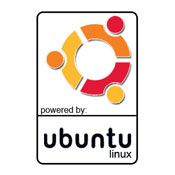
On the 25th and 26th October, LinuxWorld London is happening, and it is filled with Ubuntu goodness. Here are some details of what to look forward to:
Ubuntu will have an official stand at the show – do come along and see us. In addition to this, the excellent Ubuntu UK LoCo team will have a stand in the .org village to show off the UK Ubuntu community and the work they are doing. A number of Ubuntu UK members will be there, so be sure to visit them too.
Ubuntu Community Manager, Jono Bacon who has helped organise the booth has also organised an Ubuntu UK meet-up that takes place at the Ubuntu UK stand on Wed 25th Oct at 2.30pm. Everyone is welcome to come along to meet the community, get involved or otherwise hang out.
Jono is also involved in a number of talks and events while at LinuxWorld:
- Wed 25th Oct 2006 11.30am – 11.50am – Talk about Ubuntu on the IBM stand (free to view).
- Wed 25th Oct 2006 12.30pm – 1.30pm – Panelist on The Great Linux Debate about Virtualisation (free to view).
- Thur 26th Oct 2006 – 11.50am – 12.20pm – Talk on Cracking Open The Linux Desktop in the conference (pay to view)
- Thur 26th Oct 2006 – 12.30pm – 1.30pm – Panelist on The Great Linux Debate about the GPL (free to view).
Finally, Ubuntu and Canonical have been nominated for a number of awards at the UK Linux & Open Source Awards, and the winners will be announced on the evening of Wed 25th Oct 2006.
